Does anyone actually buy sharing bags intending to share? When customers are browsing around your store on their way home, looking for an evening treat, does anyone actually pick from the sharing display thinking: ‘Ah this will be nice for me and them indoors?’ Or is it more like: ‘This is what I feel like having and if my other half doesn’t then all the better?’ I don’t believe a word of it.
The thing about treating is that it is one of the more selfish missions. Sure you can dress it up in altruism, claiming to be doing something nice for your partner, or the girls in the office, but actually you just fancy something you know you shouldn’t really be eating and you want the excuse to have it. If you can’t give yourself permission, then roping someone else into your indulgence is the next best thing.
Big spenders
The great thing about a shopper on a treating mission is that they are valuable spenders, with their average basket spend £4.85, according to HIM. And while 13% of shoppers are buying something on impulse, 8% are on a treat mission in c-stores.
And why shouldn’t you? You deserve it! We all need rewards and as we tighten our belts by cutting out the more expensive extravegances, it only makes sense that we give ourselves a little pat on the back every now and again. Or even every day.
And boy do we feel the need to reward ourselves at the moment. According to Country Choice head of marketing Stephen Clifford, sales actually grew in the cakes and pastries category during the recession. “People were looking for small, inexpensive treats,” he says. A survey by YouGov, commissioned by Nectar, looked at treating in Britain and found that 63% of Brits were treating themselves at least once a week, with 41% admitting to giving into sudden impulses to treat up to three times a week. Top of male treats is beer, with chocolate coming in second, closely followed by watching sport. For women chocolate, cakes and biscuits scored the joint number one spot, while eating out on a weekday came in second and a curry takeaway third. Further research by the Future Foundation suggests we’re also feeling less guilty about treating ourselves, with just one in three feeling guilty about impulse buys.
According to HIM insights manager Jennifer Pratt the treating mission has remained consistent in c-stores since last year, with 8% of convenience shoppers on a treat mission. “The mission is still very valuable as it is worth £2.1bn to UK convenience,” she says.
“Shoppers are generally looking for confectionery, or ice cream, any sweet things to snack on. Later in the day the treat mission picks up and shoppers on this mission tend to purchase wine, perhaps alongside chocolate or crisps.”
Obviously chocolate scores highly here, which is borne out by Mintel research as well. The brown stuff is seen as a personal treat by 69% of chocolate eaters, particularly among women, and regarded as a reward with highly emotional drivers. Mintel points out that the treat nature of the category is echoed in marketing campaigns such as Mondelez brand Cadbury returning to the theme of personal treating in its 2014 campaign, which includes a promotion whereby consumers can win whatever brings them joy in chocolate form, plus a £5,000 treating prize.
Around 16% of Brits, which is some eight million people, eat chocolate every day and around 17% do so four to six times a week. Plain milk is the nation’s favourite block and eaten by 73% of chocolate eaters, while filled chocolate is eaten by around 49%. Chocolate also benefits from its perception as a mood booster, with a third of chocolate eaters giving this as a reason for buying it (Mintel).
Whereas chocolate is seen as a reward, with biscuits the treat is more complicated, says Burton’s head of customer category management David Costello.
Adjust stock to meet afternoon demand
The afternoon seems to be a key time for treating. According to market analysts Canadean, even the healthiest snacker in the morning finds the good intentions sliding by the afternoon. It seems that we all get a bit stressed by the afternoon, causing us to seek escapism and relaxation - which is where treats come in. Canadean’s report found that 80% of consumers who snack on chocolate bars do so in the afternoon or evening, with this pattern of consumption especially prevalent in office environments where boredom is a factor too.
Country Choice head of marketing Stephen Clifford concurs: “In cakes and pastries there is an enormous skew towards croissants and less sweet products in the morning until around 11am, but then in the afternoon, when the sugar hit is needed, people want the continental pastries. We recommend retailers adjust their stock an in-store offer to meet the AM/PM needs.”
“It has more association with the ritual of making and the break that comes with a hot drink, meaning that the treat can be used throughout the day,” he says.
“That’s the benefit of the category - it’s the only one of those treat product groups that has usage at several different times of day.”
Plus, he says, biscuits are seen as very good value for money versus, say, a chocolate bar, and therefore can be seen as a more permisseable treat. “Nearly 45% of consumer spend in this category is on treatier biscuits, either as part of an everyday routine or a special occasion. However, the key is to offer value for money, even when people are looking for products to enjoy as a treat.”
The convenience sector in particular over-indexes on treat biscuit missions, Costello adds. “Treating is so important to c-stores and particularly important in the biscuit category.” He says that biscuits buyers are split into four missions: the planned purchaser; the planned treat; impulse; and the specific occasion buyer. The challenge for c-stores is also an opportunity, he says. “The bigger supermarkets focus on the planned purchase mission and compete with the cheapest possible pricing. The advantage for impulse is that they can appeal with added value.”
Simply Fresh director Kash Khera says that treating is an important mission for c-stores, and requires a specific section. However, he says that retailers are missing a trick if they think it’s all about confectionery. “The bakery section is good for treating and is often missed, but a bag of donuts is very much perceived as a treat and people often take them back to the office. Biscuits on promotion are a good one to take back to the office as well. People feel they can afford to share them,” he says. Kash thinks that promotion is extremely important for the treating mission. “I believe people often think, ‘well it’s not good for me but it’s on offer’. Putting stuff on offer makes it permisseable and acceptable.”
Londis Bracknell retailer Arjan Mehr has a slightly different approach to treating and thinks that the opportunity lies in the unique, upmarket, locally-produced products. “When things are local and identifiable as homemade, people are prepared to pay premium for it. They look on that as a treat, although it might be a once-a-week treat rather than an everyday one.” He says, particularly now, it’s the perception of value for money that people want in their treating, which doesn’t necessarily mean cutting the price. “People are looking for extra special things. People associate quality with value for money if something isn’t too expensive.” He asserts that stores such as Lidl and Aldi have worked hard to create a perception of low cost products without sacrificing the value. “People will buy into a bottle of wine they’ve never heard of because they believe in its quality and therefore they think they’re getting value for money. A treat is something that has to have value attached to it. You might spend £5 on a bottle of wine as a treat, but it’s much more appreciated when you believe that a bottle of comparable French wine would have cost you £18.”
The fact that brand loyalty is a fading principle means retailers are free to think outside the box when it comes to the treating mission, he adds. “Your customers are saying ‘I trust this shop to get a treat, and the great thing is that it’s a treat I can’t get in another shop’. That’s the way to get a decent margin out of it rather than operating at the lowest common denominator.”
Treating as snacking
According to a Mondelez report Snacking: A World of Opportunity, treating is one of the three snacking behaviours and ties in with the emotional need for a snack to improve mood. As such it can be seen as part of the overall snacking trend. The research pointed out the enormous increase in snacking occasions. For instance, between 1977 and 1978 some 73% of adults reported that they snacked only once or not at all, whereas 65% reported snacking two or more times a day between 2007 and 2008.According to the report, this has now increased to an average of three times a day and it identifies six peaks throughout the day, including the morning with 30% of people stating they snack before midday.
When it comes to merchanding, Arjan says that pointing out the qualities of the particular product is worthwhile.
Andrew Whyte of Prees Village Stores in Shropshire says that he also focuses on added value when it comes to his in-store treats. The store has a delivery of cream cakes and custard tarts on a Wednesday and one of local, hand-made cakes on a Thursday. Both are so popular that they’re sold out within 24 hours of delivery. “I like the fact that customers look forward to things coming in. We have our branded cakes and biscuits in one place, but these are different and the customers aren’t blasé about them.” He puts the custard tarts by the till and the cream cakes in the chiller where customers can serve themselves. “They’re gone the same day they arrive. People who want them know to come in on a Wednesday and it becomes another reason for them to come in.” The local cakes sell out equally quickly, and he makes sure that there is a mix of types of cake. “The producer likes to ring the changes so it’s not lemon drizzle all the time or whatever, but she doesn’t do it on a rote basis so she always keeps it fresh.”
Planned impulse?
One of the cornerstones of the treating mission seems to be the impulsive nature of the planned mission. While this sounds an oxymoron, it actually makes sense. We’ve all experienced that afternoon feeling of fancying a little reward for ourselves, but don’t actually know what we want until we see it. Which obviously makes something like ranging and merchandising particularly important for this type of shopper. The role of the retailer in this particular circumstance is to give the customer enough choice, and inspiration - whether that is by range or price point - that they are able to realise the mission.
According to a store observation survey by Country Choice, of shoppers who visited the cakes and pastries section, 58% planned to buy a specific cake or pastry item, while 32% were on impulse. However, 10% went into the store knowing that they wanted to buy something sweet but weren’t quite sure what. Country Choice’s Clifford says that retailers can take advantage of the opportunity offered by each of these customers by employing practical measures in store: “Of the pre-planned, many of these were take home purchases and back to the office, maybe for sharing, confirming the need for availability. But many go in knowing that they want a treat, that they want a sugar hit, and these shoppers can be influenced.” He says these customers are looking for something that will immediately appeal, whether it’s with a tasty display of donuts, which can be bought individually or as part of a treat for others (sharing gives treating permission, remember!), or a well-stocked and inviting confectionery stand.
The coffee machine is a fantastic place for locating treating items aimed at the self treater, he adds. “It’s a prime site, as for every cup of coffee two food items are bought with the purchase in convenience stores. But somebody isn’t going to come in for a coffee and then walk all of the way round the store to look for somethong to go with it. It’s a real opportunity and sales driver, particularly for this type of mission, but can be easily missed.”
And a bonus of the bakery section, according to Clifford, is that even the sugariest of treats still benefits from the ‘baked’ juxtoposition in the customer’s mind, and is somehow seen as more permissable than something like a big bar of chocolate. “Cakes and pastries and chocolate and confectionery are very similar but appeal to very different needstates,” he adds.
Clifford says customers have to be careful where they place different bakery items. “Some retailers put some cookies on the bakery stand and they just sit there, but by the till they do phenomenal sales. On the bakery stand they just stand out as very expensive biscuits.”
Finally, Pratt suggests making the most of this mission by capitalising on events. “Both seasonal and daily ‘big night in’ events provide an opportunity to cross merchandise and create promotional offers across treat times,” she adds.
IN BRIEF
Pop ‘n’ Pour
Pop ‘n’ Pour from Butterkist is aimed at the treating at home market looking to recreate a cinema style occasion. Consumers warm a sachet of sauce in some warm water ready to drizzle over newly-popped popcorn fresh from the microwave. There are two flavours in the range, chocolate or chocolate orange, both with an an rrp of £2.29.
In the Mix
Mars Chocolate launched Twix Mix in a single format in February this year, expanding the brand’s Bitesize range. The bags contain caramel and biscuit balls covered in milk chocolate. Also providing a little treat for the fast-approaching World Cup this summer, a limited edition Mars & Team tub should give even non soccer fans something to celebrate.
Hit’s a hit
Bahlsen’s Hit brand is now its best-selling product in the convenience channel, buoyed by the introduction of 99p pricemarked packs.
Cadbury goes Bananas
Cadbury Dairy Milk Marvellous Creations has added a flavour with the launch of Banana Caramel Crisp featuring banana candy, caramel cubes and crispy pieces available in a 200g tablet and 47g countline.
















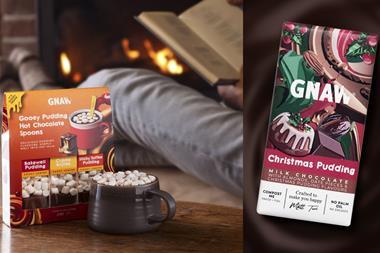

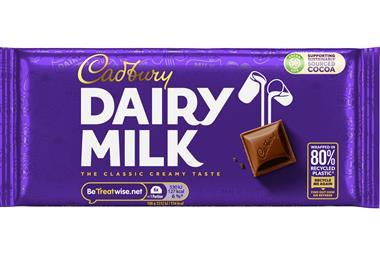
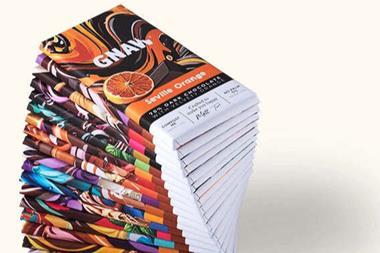
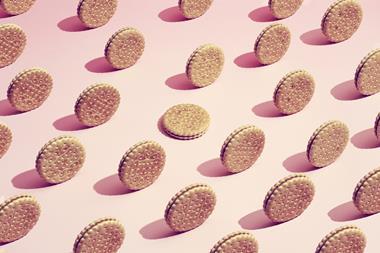
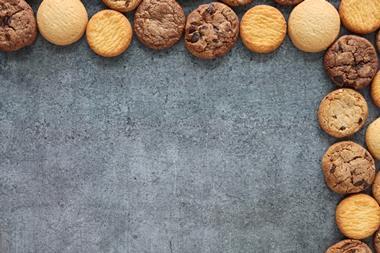






No comments yet